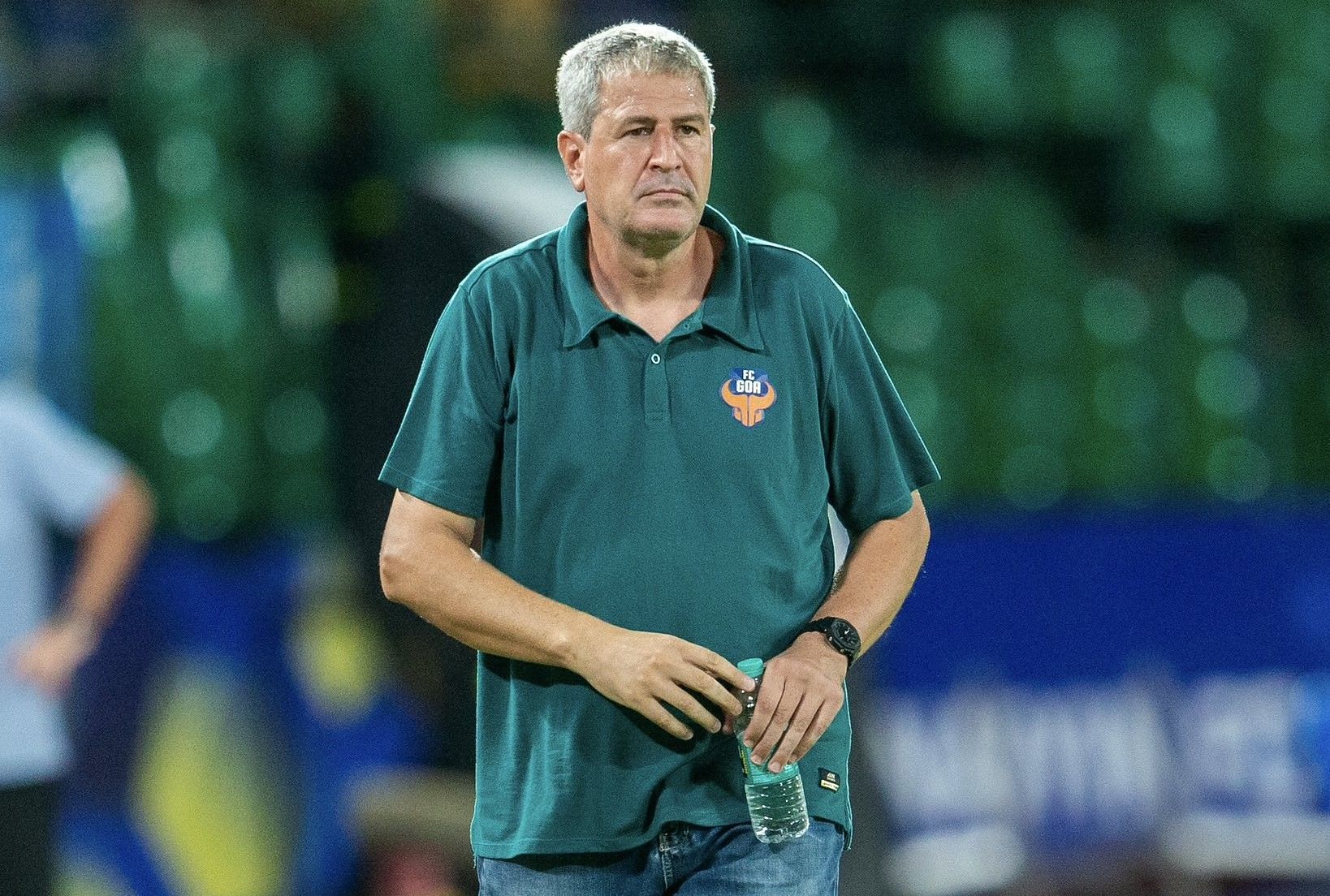
3 questions that Manolo Marquez must address as he takes on the role of India's head coach
A new era is set to begin for the Indian men’s football team as current FC Goa head coach Manolo Marquez takes on the role of head coach for the national team. The Spaniard will have dual responsibilities for the next year, managing both club and country.
The All India Football Federation (AIFF) preferred someone with experience in Indian football, and thus Marquez, who has coached in the ISL since 2020, was chosen over other candidates.
His success speaks for itself. He first guided Hyderabad FC to an unprecedented ISL Cup title in 2021-22 while simultaneously developing several young talents who are now a significant part of the national team. Manolo Marquez’s first season at FC Goa in 2023-24 was also successful, as he led the club to a third-place finish, just three points behind the eventual league winners, Mohun Bagan Super Giant.
The 55-year-old had previously expressed his desire to manage the Indian national team, and given his credentials, he appears to be the best option at the moment.
However, many challenges lie ahead. Igor Stimac’s tenure ended on a forgettable note, with the Blue Tigers knocked out of the FIFA World Cup Qualifiers. India have won just once in their last 11 games, scoring just five goals and conceding 19 in this period.
Manolo Marquez might arrive with a strong reputation, but here are three questions he must address when he steps in as the head coach of Indian football in September.
3 questions that Manolo Marquez must address as he takes on the role of India's head coach
#1 Finding Sunil Chhetri’s successor
Perhaps the most pressing question that needs to be addressed is also the hardest one. Sunil Chhetri hung up his boots last month, and India are still in a situation where there is no replacement for their greatest goalscorer.
There is currently no number nine available, let alone an experienced and proper striker to replace Chhetri. Every player who plays as a center forward in their youth days is being converted into a winger or a midfielder, largely due to ISL teams’ dependence on foreign strikers.
Igor Stimac tried several players, including Ishan Pandita, Rahim Ali, and Manvir Singh. He even experimented with a false nine, using either Lallianzuala Chhangte or Sahal Abdul Samad, but none of the attempts worked.
Manolo Marquez now faces the huge task of nailing down the forward’s role, whether he wants a target man, a pure poacher, or a false nine capable of dropping deep and linking up play.
For now, the best bet might be using Ali or Manvir Singh in the position, given their experience. However, the Spaniard can provide opportunities to youngsters like Gurkirat Singh, Ayush Chhikara, or Sivasakthi Narayanan, who are inexperienced but have shown potential at the club level.
#2 Finding the right tactical balance
The Blue Tigers seemed to have the right set of players and more importantly, the right balance under Igor Stimac just last year. However, things have drastically changed in 2024, as Stimac was let go, largely due to his struggle to maintain that balance within the team.
This year, experiments with formations and approaches to games were the themes, especially against higher-ranked opponents who simply had more quality.
The dilemma was whether to adopt a defensive setup and hit on the break or stick to the original approach of being brave in possession, which had worked well last year. The result was a mix of both, leaving India without a clear plan on the pitch, with 11 players unsure of their roles.
Consequently, Manolo Marquez’s biggest challenge is to identify the approach he will take, while also being adaptable against stronger teams. This involves finding the right balance in midfield and attack, whether by using a back-five system to counter the attacking lineup or starting with a back-four and playing a more attacking system.
Additionally, Manolo Marquez must be adept at changing systems or making key substitutions when things aren’t going well, something that Stimac struggled with during India’s poor run. All these challenges will require thorough analysis, but the Spaniard has certainly proven to be a tactically versatile coach capable of playing in different styles.
#3 Establishing a new core
India had three pillars over the past decade - Gurpreet Singh Sandhu, Sandesh Jhingan, and Sunil Chhetri - who were supported by several experienced stars. Perhaps the time has come to begin integrating the new generation and making them the cornerstone of the team.
Despite India’s poor performances under Stimac, the Croatian did introduce several young talents into the squad, who have shown glimpses of their potential. Manolo Marquez’s role will now be to secure consistent performances from these young players and make them central to the team.
This year might be the perfect opportunity to move on from the older players and experiment with the squad, given that several young players are emerging. Players like Anwar Ali, Apuia, Jeakson Singh, Lallianzuala Chhangte, and others have all been crucial to the team in the past year. It may be time for them to take up the mantle and lead India into a new era.
Manolo Marquez is experienced in developing young talent, having played a key role in shaping Indian players during his Hyderabad FC days. But this will be a challenge, as the international level is a higher standard and it will be tough for younger players to step up and show the promise they have shown in the ISL.